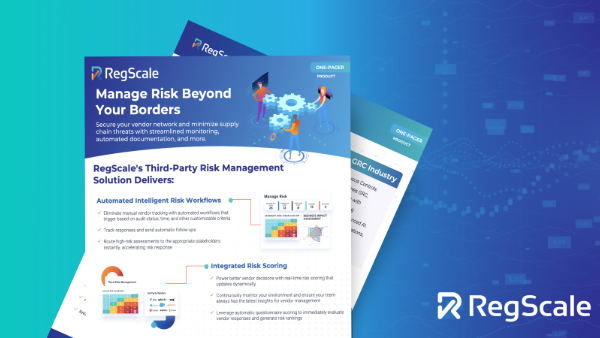The ATO Black Hole: How Government Spending on Cyber Paperwork Is Draining the Public Purse (and Our Patience)

Let’s talk government efficiency. It’s a topic that often elicits a collective sigh, a knowing chuckle, or perhaps a full-blown eye roll. While there are many dedicated individuals working hard within the public sector, there’s one area that consistently screams “inefficiency” louder than a foghorn at a Patriots game: the Authority to Operate (ATO) process.
For the uninitiated, an ATO is the golden ticket — the official permission slip — required for government agencies to deploy and use IT systems. If you need to store, process, or transmit government data, then an ATO is an absolute requirement.
Sounds reasonable, right? Ensuring security and compliance is paramount. But the reality of the ATO process in many agencies is less about diligent oversight and more about following a stringent checklist to generate the maximum amount of stale paperwork possible.
The problem isn’t just the paperwork. It’s the 30% tax it applies to every new IT system and the months or years it adds to deployment timelines for commercial innovation. The government is full of people with great ideas for efficiency, many of which are driven by technology, but they face roadblock after roadblock navigating the ATO process and the related FedRAMP certification.
The true cost of the ATO isn’t just the paperwork; it’s also the savings and efficiency we can’t achieve because we’re being hampered by legacy technology.
The Eye-Watering Numbers (Brace Yourself)
While precise, up-to-the-minute, government-wide statistics on ATO spending can be as elusive as a bipartisan agreement in Congress, the anecdotal evidence and available reports both paint a grim picture.
- Billions Spent on Paperwork: Estimates suggest that the U.S. government spends billions of dollars annually just on the process of obtaining and maintaining ATOs. This isn’t the cost of implementing security; it’s the cost of proving you’ve implemented it.
- The Million-Dollar Permission Slip: The average cost of a single ATO can easily climb into the hundreds of thousands, if not millions of dollars. Think about that for a second. It’s the price of a Bentley or a beach house just to get permission to turn on a computer system.
- System Integrator (SI) Cottage Industry: With potentially hundreds of thousands of ATOs across the vast landscape of federal, state, and local government agencies, an enormous amount of human capital is dedicated to navigating this complex and often redundant process.
- Time Is Money (and We’re Losing a Fortune): The average time to achieve an ATO can stretch from months to years. In a world where technology evolves at warp speed, waiting two years for permission to deploy a crucial system is less like due diligence and more like a technological denial-of-service attack on the agency’s mission.
It’s not just about wasted dollars and frustrated IT teams. The glacial pace of the ATO process acts as a significant barrier to adopting new, more efficient technologies. Why would an agency risk a multi-year, multi-million-dollar ATO gauntlet for a system that might be outdated by the time they get the green light? This fear of the ATO black hole stifles innovation, prevents agencies from leveraging cutting-edge tools, and ultimately hinders their ability to serve the public effectively.
Imagine the ATO as a ride at Disney — a ride that costs you $250,000 for the privilege of being kicked in the teeth as hard as possible. For this privilege, you wait in line for six months. It wouldn’t be a very popular ride at the theme park, but using government logic, we’ve mandated the ride for all IT initiatives.
There’s a Better Way
(Spoiler: It Involves Less Paperwork and More Automation)
The good news is, the future of government efficiency doesn’t have to be paved with endless spreadsheets and soul-crushing manual reviews. Enter RegScale, the superhero your ATO process desperately needs.
RegScale isn’t about cutting corners on security; it’s about injecting speed, efficiency, and sanity into the process. We understand that achieving an ATO shouldn’t require the budget of a small country or the timeline of a mission to Mars.
Here’s how RegScale can help government agencies break free from the ATO black hole:
- Continuous Compliance, Not Periodic Panic: RegScale’s platform focuses on proactive, continuous monitoring of security controls. This means less scrambling for audits and more consistent adherence to NIST risk and compliance frameworks, streamlining the ATO documentation process.
- Automation is Your Ally: Say goodbye to manual evidence collection and outdated spreadsheets. RegScale automates the gathering, tracking, and reporting of compliance data, significantly reducing the time and effort required for ATO preparation.
- Standardization for Speed: RegScale helps standardize security controls and uses AI to generate documentation across systems, reducing redundancy and making the ATO process more repeatable and efficient via compliance as code (NIST OSCAL).
- Real-Time Visibility, Real-Time Action: Gain a clear, up-to-the-minute view of your security posture. Identify and address potential issues early, preventing costly delays in the ATO process and driving down operational risk.
- Lower Costs, Faster Timelines: By automating manual tasks, streamlining workflows, and promoting continuous compliance, RegScale customers see >50% reductions in both the cost and the time required to achieve and maintain an ATO.
It’s time for government agencies to escape the clutches of legacy ATO processes that act as a silent tax on innovation and efficiency. By embracing modern solutions like RegScale, we can move towards a future where “Authority to Operate” becomes a catalyst for security, not a multi-year, multi-million-dollar obstacle course.
Let’s unlock the potential of technology in government without getting bogged down in bureaucracy. The taxpayers will thank us.
Ready to get started?
Choose the path that is right for you!
Skip the line
My organization doesn’t have GRC tools yet and I am ready to start automating my compliance with continuous monitoring pipelines now.
Supercharge
My organization already has legacy compliance software, but I want to automate many of the manual processes that feed it.
